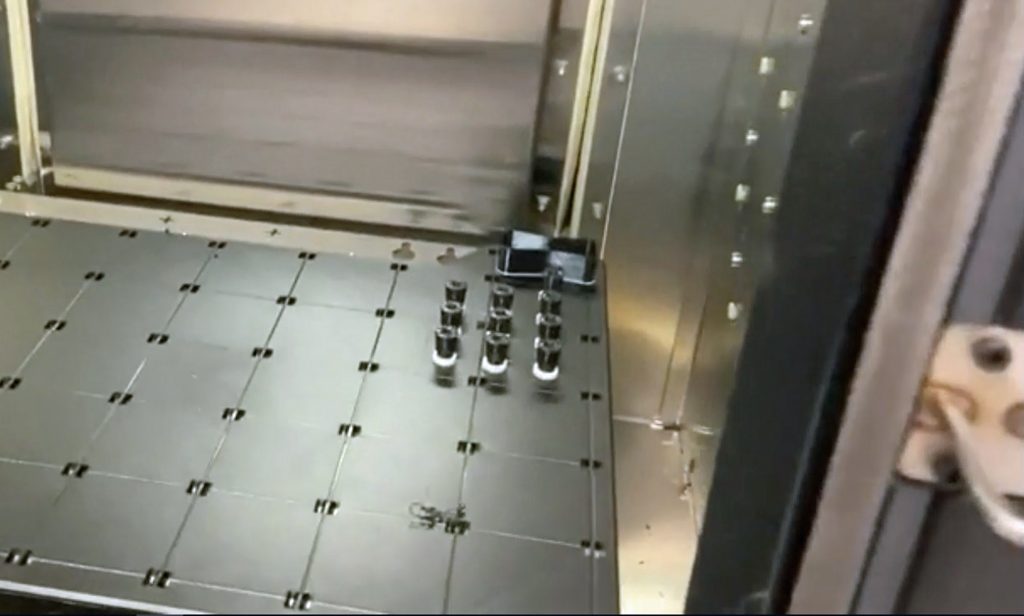Alstom, a France-based rolling stock manufacturer, has adopted FDM 3D printing technology from Stratasys to streamline spare part production for the transport sector.
One of the company’s most recent projects involved producing a set of emergency spare parts for Algeria’s Sétif Tramways, and additive manufacturing was the star of the show. Leveraging Stratasys F370 3D printers, Alstom was able to drastically slash lead times and save Sétif Tramways thousands in manufacturing costs, reducing downtime in the city’s 14-mile transport network.
“The agility that 3D printing gives us is critical for Alstom strategically as a business,” states Aurélien Fussel, Additive Manufacturing Programme Manager at Alstom. “Where our customers depend on spare parts to maintain operations, having this in-house production capability means we can bypass our traditional supply chain and respond quickly and cost-effectively with a solution to their needs.”

From 45 days to 48 hours
Having discovered that its tram headlights were sustaining internal damage from the accumulation of water and debris, the city of Sétif approached Alstom seeking help. Specifically, the city’s Tramways were in need of custom-built spare parts to plug up small holes in the trams’ headlight assemblies, preventing any further damage.
Kicking its dedicated 3D printing hub into gear, Alstom fired up its F370 FDM system and designed, 3D printed, and delivered a dozen rubber drainage plugs in just 48 hours. Using traditional manufacturing techniques, a dozen of these parts would usually take around 45 days to produce.
Additionally, the use of 3D printing in this case also reduced Sétif’s fixed manufacturing costs by around 80%, resulting in savings of approximately €6,000. This can be attributed to a lack of tooling, reduced labor costs, and the costs spared by avoiding the lengthy 45 day lead time.
“We avoided the minimum three-week production lead-time typically required of traditional manufacturing methods and ensured the tram network’s operations were minimized,” adds Fussel. “For our transportation customers like Sétif, every minute of lead time within a network means lost revenue, so every minute we can win back when solving maintenance issues reduces that loss.”

The importance of material choice
According to Jaume Altesa, Barcelona 3D Printing Hub Manager at Alstom, the success of the project was largely down to the extensive material capabilities of Stratasys’ 3D printing technology. When it comes to applications in heavy industries like transport, robust 3D printing materials with the properties required to handle high stresses and other extreme conditions are crucial.
“Having production-grade materials is essential to providing our customers ready-to-install 3D printed parts for use on vehicles,” explains Altesa.
For the Sétif Tramways project, Alstom employed a very durable elastomer material called FDM TPU 92A. The filament offers a combination of flexibility, abrasion resistance, and tear resistance, making it a perfect candidate for the drainage plugs.
“As we’ve seen during COVID-19, in some regards 3D printing has had its watershed moment, with more and more manufacturers embracing the technology to increase their production agility and reduce supply chain dependency,” concludes Yann Rageul, Head of Manufacturing Business Unit for EMEA at Stratasys. “As a longstanding customer of ours, Alstom is a shining example for these companies having pioneered the use of additive manufacturing for spare part production for many years.”
For companies like Alstom, the ability to 3D print custom replacement parts without the high costs or lengthy lead times is a game-changer. Just last month, automotive corporation Daimler AG and its service brand Omniplus created a mobile 3D printing center specifically for the decentralized production of spare parts. The mobile container will be in operation at the BusWorld Home (BWH) service center in Hamburg, and can be transported by truck to any location.
Going down the software route, France’s national railway company, the Société nationale des chemins de fer français (SNCF), recently announced the adoption of 3D printing software developer 3YOURMIND’s Agile PLM software. In a bid to cut costs and streamline on-demand spare part production, SNCF will use the Digital Qualified Inventory platform to identify, evaluate, and store its additive manufacturing part data.
Subscribe to the 3D Printing Industry newsletter for the latest news in additive manufacturing. You can also stay connected by following us on Twitter, liking us on Facebook, and tuning into the 3D Printing Industry YouTube Channel.
Looking for a career in additive manufacturing? Visit 3D Printing Jobs for a selection of roles in the industry.
Featured image shows Algeria’s Sétif Tramways, which comprise 26 stops across almost 14 miles. Photo via Alstom.



